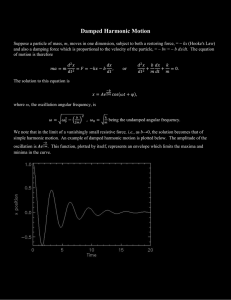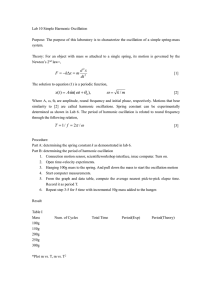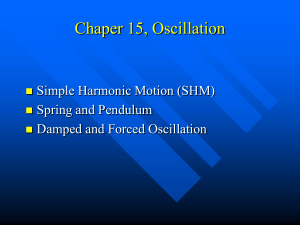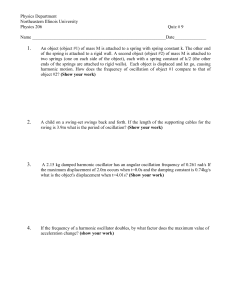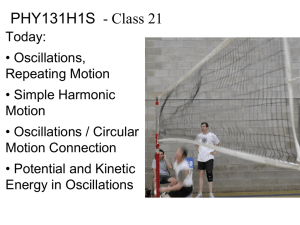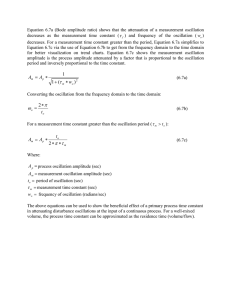18. The vibration frequency of a hydrogen chloride molecule is... Hz. How long does it take the molecule to complete one...
advertisement
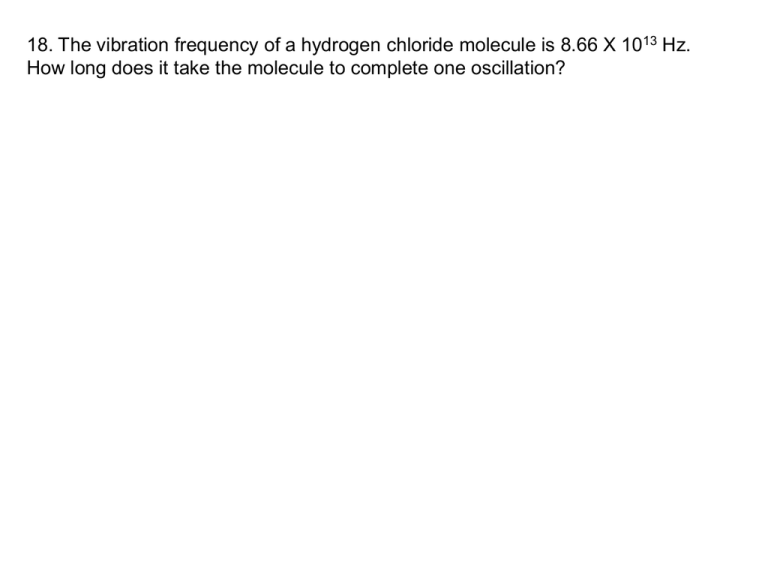
18. The vibration frequency of a hydrogen chloride molecule is 8.66 X 1013 Hz. How long does it take the molecule to complete one oscillation? 19. Write expressions for simple harmonic motion (a) with amplitude 10 cm, frequency 5.0 Hz, and maximum displacement at t = 0; and (b) with amplitude 2.5 cm, angular frequency 5.0 s-1, and maximum velocity at t = 0. 20. The top of a skyscraper sways back and forth, completing 9 oscillation cycles in 1 minute. Find the period and frequency of the motion. 21. A 200-g mass is attached to a spring of constant k = 5.6 N/m and set into oscillation with amplitude A = 25 cm. Determine (a) the frequency in hertz, (b) the period, (c) the maximum velocity, and (d) the maximum force in the spring. 22. An astronaut in an orbiting spacecraft is "weighed" by being strapped to a spring of constant k = 400 N/m and set into simple harmonic motion. If the oscillation period is 2.5 s, what is the astronaut's mass? 29. At the heart of a grandfather clock is a simple pendulum 1.45 m long; the clock ticks each time the pendulum reaches its maximum displacement in either direction. What is the time interval between ticks? 32. A wheel rotates at the rate of 600 rpm. Viewed from the edge, a point on the wheel appears to undergo simple harmonic motion. What are (a) the frequency in Hz and (b) the angular frequency for this SHM? 34. A 1400-kg car with poor shock absorbers is bouncing down the highway at 20 m/s, executing vertical harmonic motion at 0.67 Hz. If the amplitude of the oscillations is 18 cm, what is the total energy in the oscillations? What fraction of the car’s kinetic energy is this? Neglect the rotational energy of the wheels and the fact that not all the car's mass participates in the oscillation. 35. A 450-g mass on a spring is oscillating at 1.2 Hz. The total energy of the oscillation is 0.51 J. What is the amplitude?
